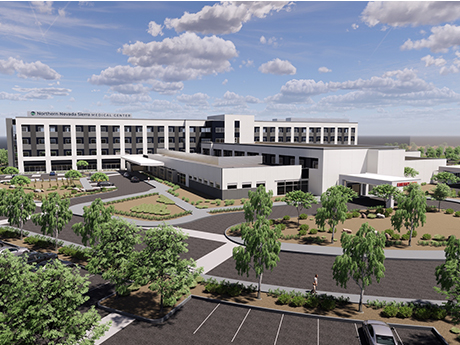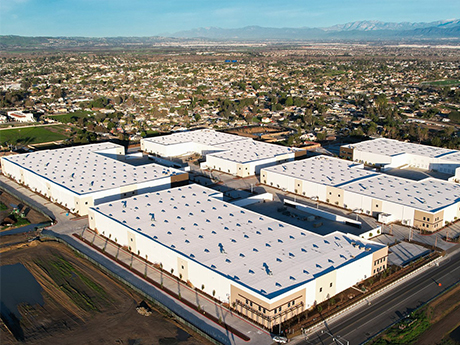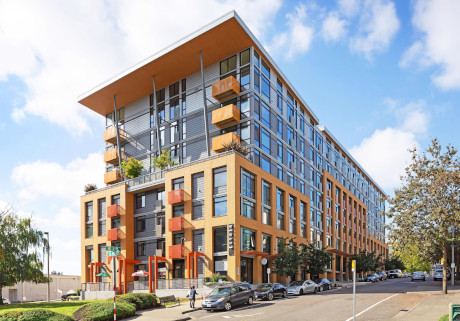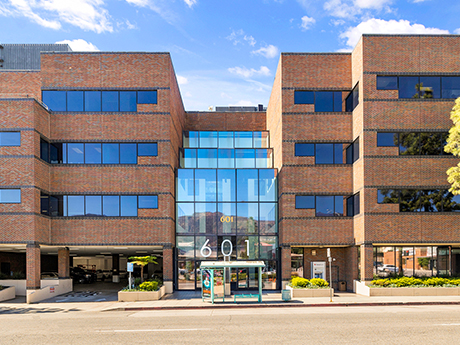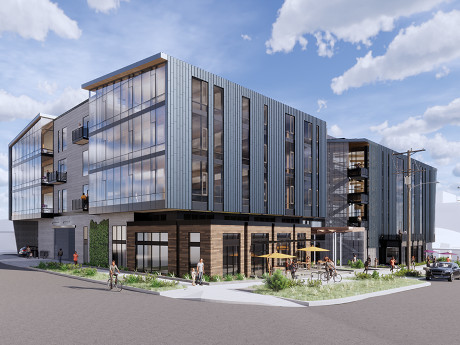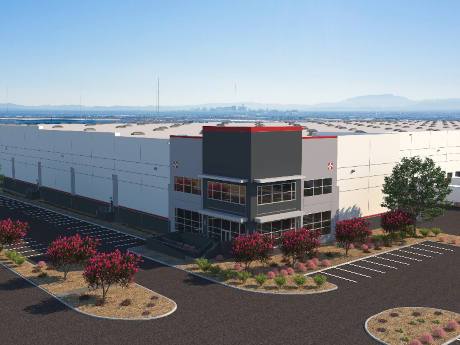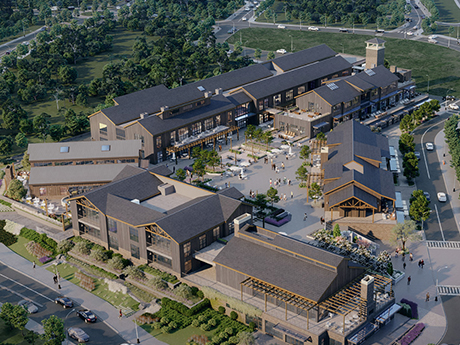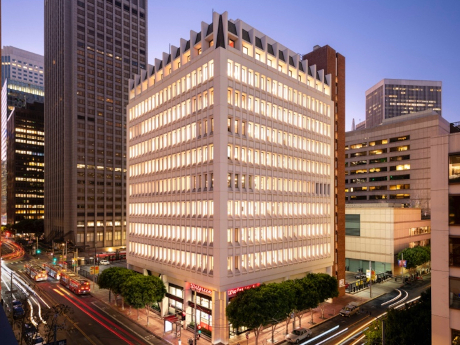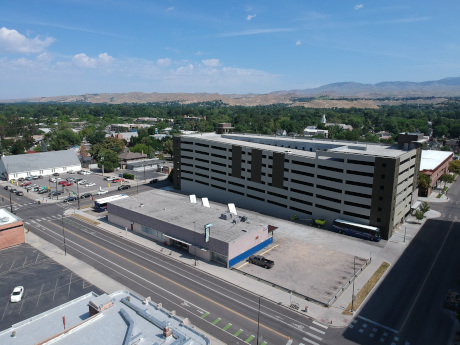— By Daniel A. Kapic, Vice President, Regional Manager, Marcus & Millichap — Reno continues to be one of the nation’s fastest-growing smaller markets, underpinning tenant demand in the office sector. While remote and hybrid work have impacted office use in the metro, market-wide vacancies have kept in decent shape. Entering July 2023, Reno’s 15.1 percent vacancy rate was below the pre-2017 average. Rapid household growth has backstopped space needs, with law, financial and health service providers executing expansions to capture share in a growing market. The local household count increased 2.2 percent year over year in September, which was the second fastest among metros with fewer than 600,000 households. South Reno is spearheading this growth with 14 consecutive quarters of positive apartment net absorption through June 2023, drawing consumer-facing office tenants to the highly developed Meadowood neighborhood. The Reno VA Medical Center — which serves patients as far as Alturas, Calif. — recently announced its relocation to the area, which should also elevate long-term needs for nearby medical office space. While household growth has shored up space demand, Reno’s office market is still recalibrating to a 20-year-high supply injection. Overall inventory expanded 2 percent in the first half of …
Western Market Reports
— By Nellie Day — Jon Pharris, co-founder and president of Newport Beach, Calif.-based CapRock Partners, is in delivery mode. The firm recently debuted Palomino Ranch Business Park and Saddle Ranch South, two new LEED Silver-certified industrial building complexes in Norco, Calif. Palomino Ranch is a three-phased, 2-million-square-foot industrial development, while Saddle Ranch South is a 374,000-square-foot three-building industrial park. Next up is Central Point III, a component of CapRock’s 5-million-square-foot, master-planned Central Point industrial development in Visalia. WREB recently sat down with Pharris to discuss these new projects, the types of tenants/users CapRock is now targeting and why location is more important than ever. WREB: Why was Norco the right choice for both the Saddle Ranch South and Palomino Ranch developments? Pharris: Norco is an important location for logistics and distribution due to its position near the convergence of Riverside, San Bernardino and Orange counties, in addition to its seamless transportation connectivity, robust infrastructure, proximity to major ports and airports, favorable business environment and skilled workforce. These factors collectivelycontribute to the city’s efficiency, cost-effectiveness, and competitiveness for facility operations, attracting businesses seeking to optimize their supply chains and expand their market reach. Norco is highly desired by Orange County, …
Inflated Interest Rates Impact Values, but Tech and Growth Drive Resilience in Metro Seattle
by Jeff Shaw
— By Steven Chattin, Managing Director, Berkadia — Nationwide, inflated interest rates are significantly impacting property values. In the Seattle metro, cap rates are increasing while values decline and bridge debt rates hover at 8 percent or higher — non-starters for many multifamily investors. The common play is to secure favorable short-term financing for if and when rates come back down. Due to these factors, family offices, high-net-worth individuals and private capital groups are the most active players in today’s market. Lenders are also feeling the impact of the economic environment, with the current depth being extremely shallow for competitive options. As transactions slow, some players are scaling back or stepping out of certain arenas entirely. Umpqua Bank recently shuttered its multifamily lending operation on the West Coast. According to second-quarter data provided by CoStar, multifamily sales volume has decreased by 50 percent year over year. Agency debt is most favored right now with fixed rates preferred over floating rate debt. Where available, loan assumptions are generally the most attractive option and have bridged many deals across the finish line. Challenges aside, many developers are staying busy as evidenced by the nearly 12,000 additional units projected within the Seattle-Tacoma metro …
— By Scott Romick — The Western region is going through a lot of changes when it comes to the office market. Downtown San Francisco, in particular, was a large tech hub with so much infrastructure prior to the pandemic, but it’s currently become more of a ghost town. Because hybrid and remote work is common now, many of the workers who are back to the office have moved to local submarkets that offer faster commutes, more efficiency, affordability and other key factors. Southern California, on the other hand, is a growth market. Suburban areas like the San Fernando Valley’s Sherman Oaks — which has become more active than the West Valley — continues to expand its population. This helps the office market as well as existing and new retailers. Even pockets like Encino, Studio City and Burbank have become more populous, attracting a young workforce given their proximity to local restaurants, coffee shops and parks. Unfortunately, Downtown Los Angeles is still struggling to recover as a central business district, Century City is rebounding slowly and Santa Monica is shifting in its downtown area, given the nature of office structures and their footprints. Hybrid & Regionalized Real Estate The hybrid work …
— By Lisa Stewart, Senior Managing Director, JLL; and Nick Menghini, Puget Sound Research Manager, JLL — Real estate market participants are maintaining cautious optimism for improved conditions across the Puget Sound as signs of vitality are emerging despite persistently challenging economic forces. Viewed through the lens of prior real estate cycles, it’s clear the Seattle area has a greater critical mass of highly skilled talent and a broader, more resilient economic base than previous slowdowns. Among the promising indicators are the Puget Sound’s rebound of population in-migration, from net outflows during the pandemic to more than 53,000 new residents moving here in the first half of the year. Seattle now lays claim to being the fastest growing of the top 50 U.S. cities, according to Census data. Several leading employers are also growing again. This includes Boeing, which has more hiring underway than in years’ past. Rising star Blue Origin has had about half as many open positions as Boeing over the past 12 months. The life sciences sector is further expanding as Big Pharma firms like Pfizer, Moderna and Novartis join homegrown startups with significant Puget Sound presences. Overall, companies encouraging a return-to-office (RTO) have brought more daytime foot traffic to employment …
— By Ted Evans — The white hot, logistic-based real estate market in Southern California has cooled off. This is due to a combination of factors, including the end of COVID-based buying. Labor disputes, interest rate hikes and slower absorption rates are pushing business back to normal in a Western market segment supported by strong fundamentals. Returning to Normal As the crazed days of pandemic-induced buying slip into the past, we are seeing vacancy levels returning to pre-pandemic conditions. This may not be what some real estate investors want to hear, but the supply chain is certainly not as constricted as it was two years ago. The days of ordering products that were unavailable for weeks or months are over. The numbers we’re seeing back up our on-the-ground assessments. According to Savills, the warehouse vacancy rate in the logistics-heavy Inland Empire jumped to 3.8 percent in the second quarter. This was compared to 1.2 percent a year earlier, which was largely driven by reduced tenant demand over this period. The national vacancy rate for the sector clocks in at 4.7 percent, proving that the logistic sun is still shining in California. However, the increased vacancy rate is also …
— By Nellie Day — Everyone is tired of hearing about the challenging lending climate — no one more so than investors and developers who would like to keep the gravy train moving. “I think the glory days of the last four to five years are now tempered with the increased interest rates,” says Jordan Schnitzer, president of Portland, Ore.-headquartered Schnitzer Properties. “I also believe the hyper growth of big box industrial developments over 500,000 square feet is grinding to a slower halt. A significant amount of that growth has been from Walmart, Amazon and other large retailers that now may have enough space for the next several years before they enter a growth phase again.” So, what’s an industrial player to do when interest rates are high and the industry darlings that have been so active for so long now say their needs have been met? You pivot. “While it’s easier to collect a single check from a 500,000-square-foot tenant, we would rather roll up our sleeves and work harder to get 50 tenants from a 500,000-square-foot building,” Schnitzer continues. New Strategies For A New Era Schnitzer notes that his firm began to see cap rate compression on Western-based industrial …
— Jennifer Seversen, Vice President, CBRE — Suburban retail is emerging as the main driver of retail growth in Seattle. In the height of the pandemic, many consumers stayed close to home, rediscovered their neighborhoods and began shopping primarily in their communities. These habits have continued and, as a result, retailers on once-heavily trafficked commute paths have experienced declining sales revenue. Retailers are taking notes, particularly those in city office districts that rely heavily on daytime foot traffic. The white-hot activity in suburban retail has led to vacancy rates under 2 percent, healthy rent growth and record-breaking absorption within new developments. Rents in suburban markets like Totem Lake, Bothell and Woodinville are outpacing downtown Seattle by 50 percent, something that would not have been conceivable three years ago. Well-located mixed-use retail projects and neighborhood centers have led the way in pushing rent growth, while grocery-anchored developments have been attractive assets to investors. Restaurants have proven to be a major driver of retail activity, with Seattle having a 7 percent increase in diners year over year through the second quarter, the fifth highest increase in the U.S., according to OpenTable. An example of the rise in suburban retail demand is Harvest, …
— By Dina Gouveia and Louis Thibault — The San Francisco market ended the second quarter of 2023 with a 27.2 percent vacancy rate for the office sector, according to Avison Young’s market report. As companies scaled back operations and experienced slower growth, vacancy rates continued to increase. As of late, we are seeing many tenants in a wait-and-see mode when it comes to leasing decisions. This is despite a majority of companies desiring to have employees back in the office. Below are a few key trends and observations when it comes to the office market, as well as some green shoots where we see opportunities for an accelerated recovery. Return to the Office The slow return to office (RTO) largely comes down to overall economic conditions and who has the upper hand in the job market. The trend that we’ve seen in the San Francisco region is that larger tech companies like Apple and Google have led the RTO efforts with CEOs like OpenAI’s Sam Altman opining that remote work is essentially detrimental to collaboration and creativity. It appears there is a widespread appetite to bring employees back into the office full-time. As the job market continues to soften, …
— By Nellie Day — Boise was a hotspot of activity as the pandemic hit in 2020, with many people desiring more space, more access to the outdoors and, in some cases, a cheaper cost of living. Mike Erkmann, principal at NAI Select, fills WREB in on what the city and its commercial real estate landscape has been like since 2020. What are the notable trends occurring in Boise? The most notable trend occurring in Boise continues to be the expansive population growth. Boise was the fifth fastest-growing city in the U.S. in 2022 and 2023. We are expected to see 37 percent population growth between 2022 and 2050, with a predicted total MSA population of 1.1 million people. On average, we are adding about 15,000 people annually, which will continue to rank Boise at the top for fastest-growing cities in the U.S. What challenges is this market facing? Aside from the obvious challenges we are facing in the market, including higher interest rates and tougher lending requirements, we here in Idaho are facing a shortage of labor with the dramatic increases in the cost of living. Median sales prices in Boise have increased 78 percent over the past five years …


